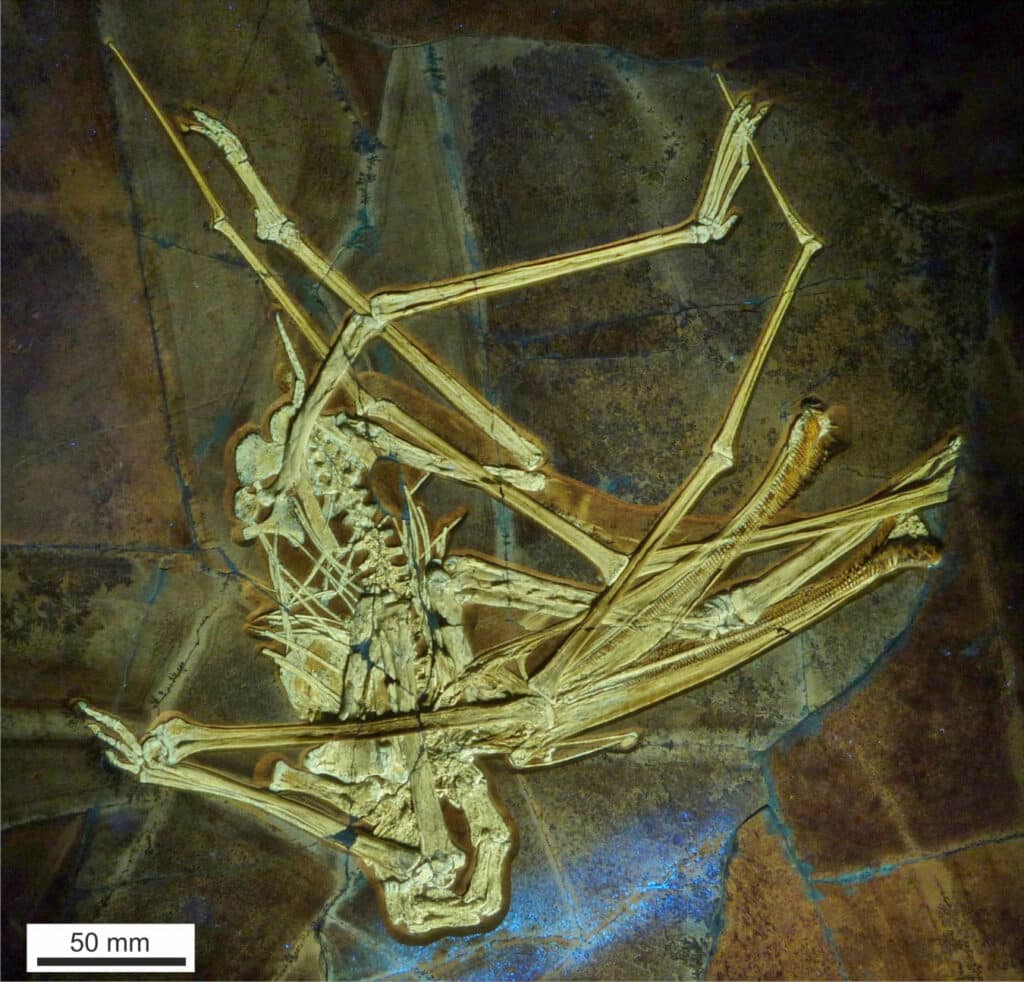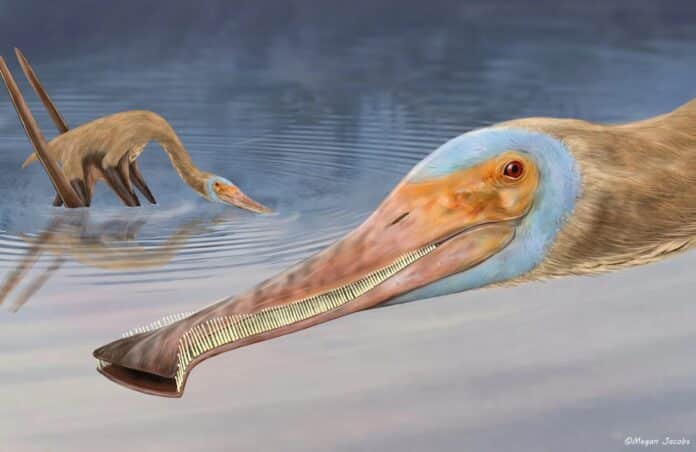The Upper Jurassic laminated limestones of the Franconian Jura in Bavaria, southern Germany, have long been famous for the abundance, diversity, and exceptional quality of preservation of their pterosaur fossils. Recently paleontologists from England, Germany, and Mexico have discovered an unusual new pterosaur species fossil in a German quarry.
The fossil had more than 400 teeth that looked like the prongs of a nit comb. Its jaws are long, curved upwards like an avocet, and at the end, it flares out like a spoonbill. Its mouth ends without teeth, yet both jaws are covered in teeth from the front of its smile to the back.
The pterosaur belongs to a family of pterosaurs called Ctenochasmatidae, known from the limestone in Bavaria, Germany, where this one was also found.
Scientists named it Balaenognathus maeuseri. The generic name roughly translated means whale mouth because of its filtering feeding style. The specific name is after one of the co-authors Matthias Mäuser who sadly passed away while writing the paper.
Professor David Martill, lead author of the research, from the University of Portsmouth’s School of the Environment, Geography, and Geosciences, said, “And what’s even more remarkable is some of the teeth have a hook on end, which we’ve never seen before in a pterosaur ever. These small hooks would have been used to catch the tiny shrimp the pterosaur likely fed on – making sure they went down its throat and weren’t squeezed between the teeth.”
“This was a rather serendipitous find of a well-preserved skeleton with near-perfect articulation. It suggests the carcass must have been at a very early stage of decay with all joints, including their ligaments, still viable. It must have been buried in sediment almost as soon as it had died.”

The new pterosaur’s teeth hint at a remarkable feeding strategy as it waded through the water. It would funnel water into its spoon-shaped beak, then use its teeth to squeeze out extra liquid while trapping food inside its mouth.
The species most likely swam across shallow lagoons, sucking on tiny copepods and water shrimp before filtering them out with its teeth, just like ducks and flamingos do.
Professor Martill said: “Matthias was a friendly and warm-hearted colleague of a kind that can be scarcely found. To preserve his memory, we named the pterosaur in his honor.”
The specimen is currently on display in the Bamberg Natural History Museum.
Journal Reference:
- Martill, D.M., Frey, E., Tischlinger, H. et al. A new pterodactyloid pterosaur with a unique filter-feeding apparatus from the Late Jurassic of Germany. PalZ (2023). DOI: 10.1007/s12542-022-00644-4
